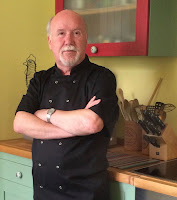Rice, the world's number one staple
The Recycled Cook
By Adrian Sleeman
Rice, the world's number one staple
 This is without doubt the most widely consumed staple food for a large part of the world's human population, especially in South East Asia. Rice is the seed of the grass species Oryza sativa (Asian rice) or Oryza glaberrima (African rice). Rice was first domesticated by the Chinese over 10,000 years ago in the Pearl River valley region of China. From East Asia, rice as a food staple spread to South East and Southern Asia. Rice was eventually introduced to Europe through India, and to the Americas through European colonisation.
This is without doubt the most widely consumed staple food for a large part of the world's human population, especially in South East Asia. Rice is the seed of the grass species Oryza sativa (Asian rice) or Oryza glaberrima (African rice). Rice was first domesticated by the Chinese over 10,000 years ago in the Pearl River valley region of China. From East Asia, rice as a food staple spread to South East and Southern Asia. Rice was eventually introduced to Europe through India, and to the Americas through European colonisation. Growing up in wales for me rice was usually served as a milky pudding with a lovely skin on top but over the years and with much travel I have learned that rice is probably the most versatile staple in the world.
We are now of course very familiar with ordering rice as a side dish rice as an accompaniment to Chinese and Indian food but he variety of ways in which we can experience this remarkable dish seems to grow by the day. Steamed or boiled rice, fried rice (with or without egg), Pilau (Pilaf) rice, garlic rice, pineapple rice, onion rice, coconut rice and Jasmin rice (Thai fragrant rice) are all commonly available in our local Oriental and Indian restaurants.
 |
| Curry and rice |
Basmati was introduced to the Middle East by Indian traders and is now commonly used used in Persian, Arab and other Middle Eastern cuisines as well. India and Pakistan are the exclusive growers and exporters of this type of rice.
In parts of the Far East, they favour long grain "Jasmin" rice, grown predominantly in Thailand and Cambodia and in Europe both the Italians and Spanish use short fat grains of rice that slowly absorb a high volume of liquid ideal for their two best known rice dishes. The Italians use the superb "Carnaroli" or the more common "Arborra" rice in their famous Risottos and the Spanish a similar short grain "Bomba" or "Calasparra" rice in Paella and Arroz dishes. There are in fact around 40,000 variants of rice grown around the world including but all originated from China.
American long grain rice, as you would expect is grown in enormous quantities and they export 400,000 tonnes a year to japan alone. We often see this rice variety in the easy cook rice products. Be aware though that American rice has been shown to contain the highest levels of pesticide left over from historic cultivation methods.
Pilau Rice (also known as polau, palov, polou, palov, polu, polaao, pukao, pulav and plov) is a dish in which rice is cooked in a seasoned stock often seasoned with onion, garlic, exotic spices and dried fruits. My thanks to my, well travelled, Nephew Jonathan for the additional research on the above.
This dish seems to have come from the Arabs but is also found in the Middle East, Africa, Northern Indian, Latin America and the Caribbean.
Pilaf is also a staple food and a national dish in Afghan, Armenian, Azerabijani, Kenyan, Balochi, Buckharan, Uzbek, Tajik, Iranian (Persian) and Jewish cuisines.
The ever popular Byriani, a favourite in many Indian restaurants is also a variant of a Pilau. The word "biryani", it has been suggested, comes from "birinj", the Persian word for rice.
 |
| Risotto |

Both dishes are slow cooked in stock, infinitely variable and have become firm favourites around the world. The best advice I could give on cooking either is leave it alone, the more you disturb it them the more starch you will release and the heavier the dish will become.
 |
| Moros y Cristianos |
Brown rice, much loved by healthy eaters is basically any rice that has no been milled to remove the bran and germ. These are removed when making white rice.
Surprisingly brown rice will not keep as well as white rice as the fats contained in the outer coating can go rancid much quicker than the milled rice.
Surprisingly brown rice will not keep as well as white rice as the fats contained in the outer coating can go rancid much quicker than the milled rice.
Wild rice is not directly related to its oriental cousin but a species of grass and the grain that can be harvested from them. This "rice" originates from North America and is currently popular as a health food due to its high roughage content. Personally I find it hard and stringy so it would not be my first choice.
Caution: I would not recommend reheating cooked rice though as it can be risky. It is not the reheating that causes the problem but leaving cooked rice at room temperature for too long. Uncooked rice can contain a bacterium that can cause food poisoning. When the rice is cooked the spores can survive, if the rice is left standing at room temperature they will multiply and can produce toxins which will in turn cause food poisoning. The longer cooked rice is left at room temperature, the more likely it is that the bacteria or toxins could make the rice unsafe to eat.




Comments
Post a Comment